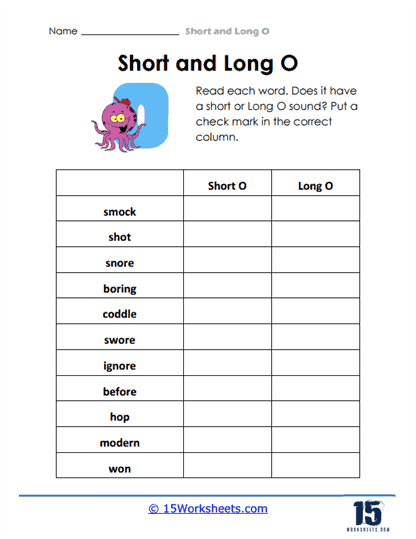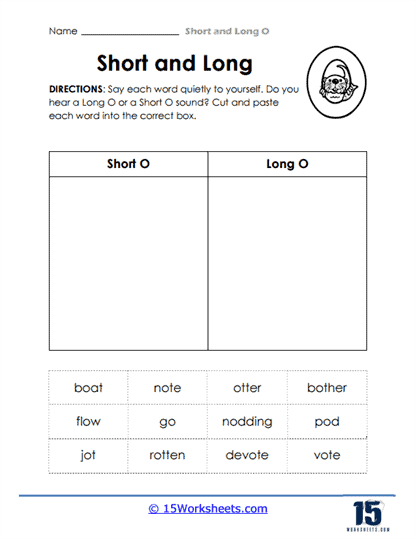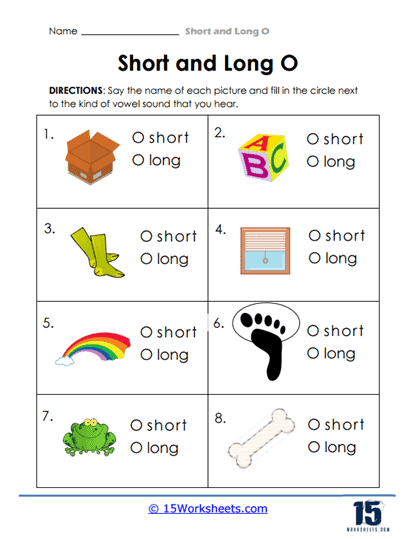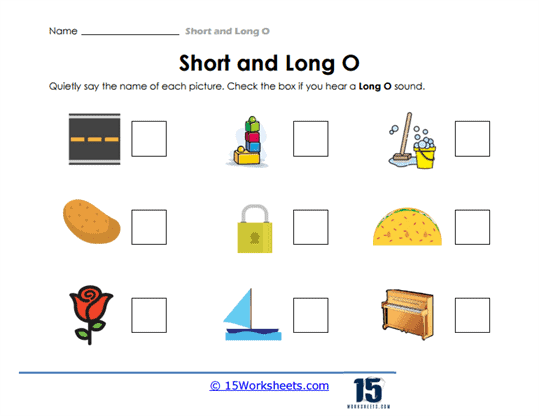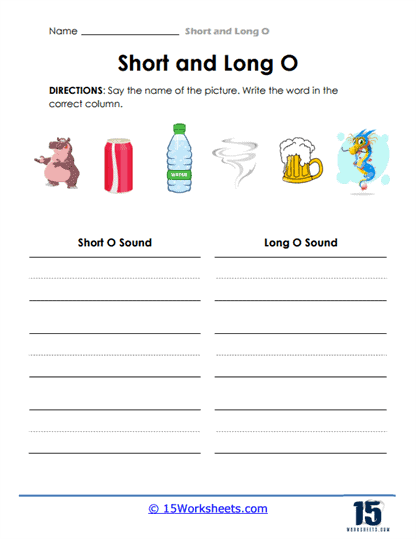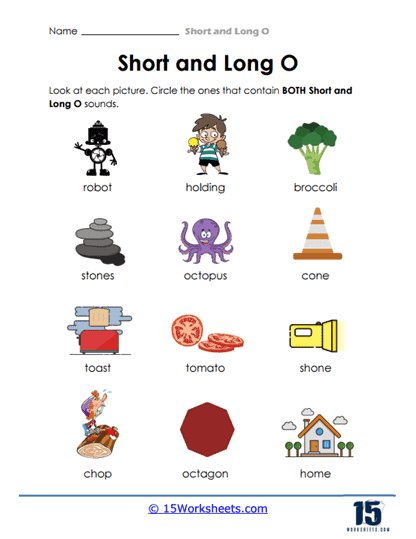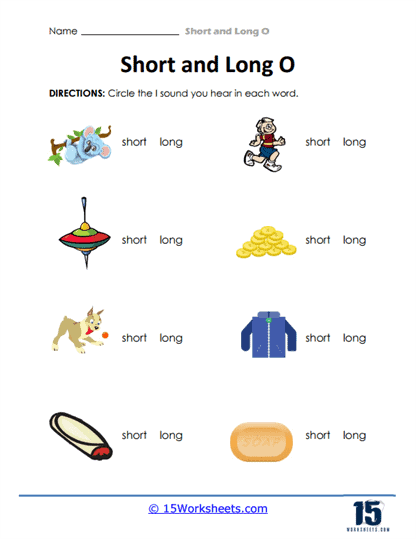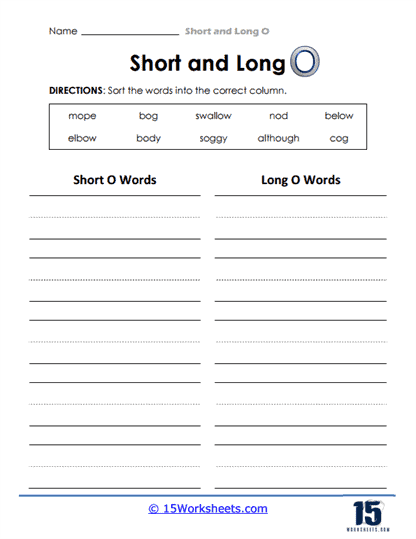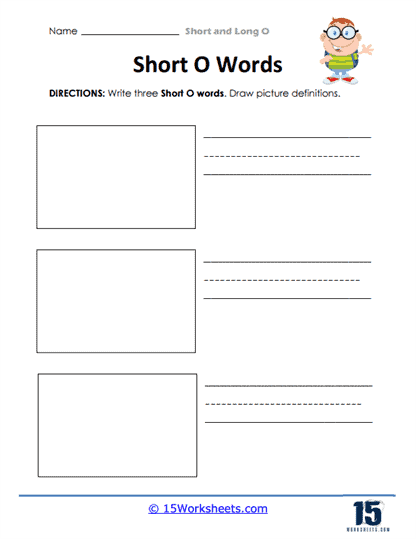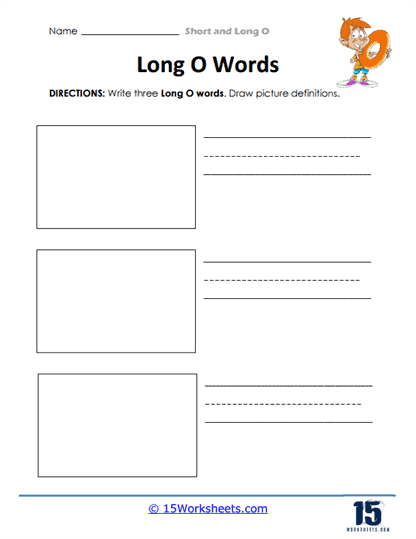Short and Long O Worksheets
All About These 15 Worksheets
Understanding the distinction between short and long vowel sounds, particularly the ‘O’ sound, is a foundational skill in early literacy and phonics. This knowledge forms the basis for reading, spelling, and effective language development.
To support students in mastering this crucial phonemic awareness skill, we present a collection of Short and Long O worksheets. These worksheets are thoughtfully designed to provide students with structured and engaging opportunities to practice and refine their understanding of short and long ‘O’ sounds.
These worksheets will be helpful for students to learn the proper vowel “o” sounds in a word. If you’ve ever been puzzled by the difference between the sound of ‘o’ in ‘pot’ and ‘o’ in ‘pole,’ then this is for you!
These are special sheets filled with fun exercises that help students practice and learn the difference between the short O and long O sounds. By doing these exercises, students get better at hearing the different sounds and using them correctly when they read and write.
What is a Short Vowel O Sound?
The short vowel “o” sound is a quick and brief sound you hear in certain words. It sounds like the “o” in “pot.” It’s not drawn out like the “o” in “pole” or “rose.” Instead, it’s a sharp, snappy sound.
Examples of Short Vowel O Words
Dog: The playful dog chased its tail in the backyard.
Frog: A green frog jumped into the pond with a splash.
Top: Please put the book on the top shelf.
In each of these sentences, the words “dog,” “frog,” and “top” all have the short “o” sound. If you say them out loud, you can hear how the “o” sound is short and crisp.
What is a Long Vowel O Sound?
The long vowel “o” sound can be thought of as saying the name of the letter “O.” It has a prolonged “oh” sound. It’s different from the short “o” sound, which is quicker and sharper. The long “o” sound can sometimes be found in words where the letter “o” is followed by a silent “e” (like in “bone”), but there are other patterns and exceptions as well.
Examples of Long Vowel O Words
Boat: We rented a boat to sail across the lake during our vacation.
Glow: The soft glow from the lantern lit up the entire campsite.
Note: I left a note on the fridge to remind everyone about the picnic tomorrow.
In each of these sentences, the words “boat,” “glow,” and “note” all have the long “o” sound. When you pronounce them, you can notice how the “o” in each word has a drawn-out “oh” sound, distinguishing it from the short “o” sound.
Types of Exercises on These Worksheets
Picture Matching – Pictures of objects are shown, and students need to connect the object to either “short O” or “long O”.
How it helps: This helps students relate real-world objects with the sound they’re learning. For instance, they might see a picture of a pot (short O) and a photo of a boat (long O).
Word Sorting – Students get a list of words, and they have to sort them into two groups: words with short O sounds and words with long O sounds.
How it helps: This exercise trains students to recognize which words use which sound, making them better readers and writers.
Fill in the Blanks – A sentence is given with a missing word, and students need to fill in the blank with the correct word that has either a short O or a long O sound.
How it helps: It helps students understand how the sound fits into larger sentences, ensuring they’re using the right sound in context.
Rhyme Time – Students are given a word (like ‘fro’), and they have to find other words that rhyme with it.
How it helps: Rhyming is a fantastic way to recognize sounds in words. If two words rhyme, they often share the same sound at the end.
Listening Exercises – Students listen to a word and decide if it has a short O or a long O sound.
These worksheets are like the training wheels on a bicycle. Just as training wheels help a young rider balance and gain confidence, these worksheets help students practice their phonics skills until they become natural.
By focusing on the different O sounds, students become more attentive to the sounds of other letters too. They learn to recognize patterns, improve their pronunciation, and become better readers and writers.
In a way, these sheets are like puzzles. They’re fun, engaging, and a little challenging. But every time a student completes one, they’re not just solving a puzzle. They’re boosting their language skills, getting one step closer to being a master of words.
The Importance of Short and Long O
Understanding the difference between short and long vowel sounds, especially the ‘O’ sound, is of paramount importance for several reasons:
- Reading Proficiency: Accurate recognition of short and long ‘O’ vowel sounds is essential for fluent reading. It enables students to decode words correctly and comprehend text effectively.
- Spelling Competence: Proficiency in distinguishing short and long ‘O’ vowel sounds enhances students’ spelling skills. When they can differentiate between these sounds, they are better equipped to spell words accurately.
- Phonemic Awareness: Recognizing short and long ‘O’ vowel sounds fosters phonemic awareness—the ability to identify and manipulate individual phonemes (sounds). This skill is critical for literacy development and reading comprehension.
- Vocabulary Growth: Learning the nuances of short and long ‘O’ vowel sounds exposes students to a broader range of words, enriching their vocabulary and comprehension.
This collection of Short and Long O worksheets is a valuable resource for educators and parents committed to supporting their students’ phonics and literacy development. Proficiency in distinguishing between short and long vowel sounds, particularly the ‘O’ sound, is a foundational skill that opens the doors to reading fluency, comprehension, effective spelling, and vocabulary growth.
By using these engaging worksheets, students will strengthen their ability to recognize and use short and long ‘O’ sounds with confidence. This collection is an investment in their future success, ensuring they have a solid foundation in phonemic awareness, phonics, spelling, and vocabulary.





